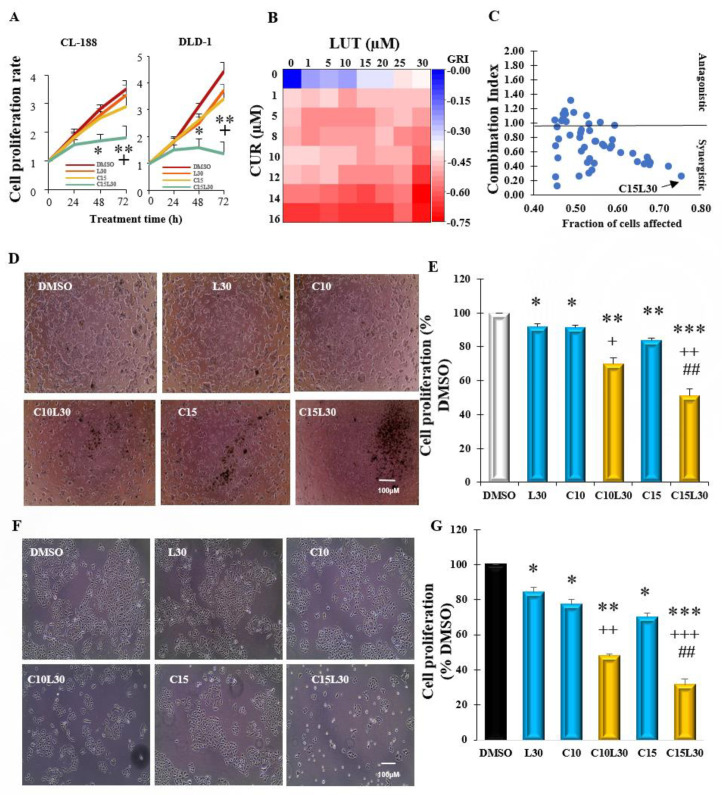Figure 1.
Combined curcumin and luteolin synergistically inhibited cell proliferation in colon cancer CL-188 cells and DLD-1cells: (A). The time course (24 h, 48 h, and 72 h) of cell proliferation by individual or combination of luteolin (LUT) and curcumin (CUR) in CL-188 and DLD-1 cells. (B). Heat map of combined CUR and LUT indicating inhibitory effects of the agents in CL-188 cells. (C). Quantitative plot of fraction affected-combination index showing the combinatorial doses of CUR and LUT in CL-188 cells. Each point represents the growth inhibition rate and fraction of affected cells. Points with a combination index (CI) > 1 indicates an antagonistic effect, CI = 1 indicates an additive effect, and CI < 1, a synergistic effect. (D). Representative images of CL-188 cells treated with LUT 30 µM, CUR at 10 or 15 µM, and their combinations for 72 h. (E). Bar graph showing growth inhibition of individual chemical CUR at 10 or 15 µM, LUT at 30 µM, or combinations in CL-188 cells. (F). Representative images of DLD-1 cells treated with LUT 30 µM, CUR at 10 or 15 µM, and their combinations for 72 h. (G). Bar graph showing growth inhibition of individual chemical CUR at 10 or 15 µM, LUT at 30 µM, or combinations in DLD-1 cells. *, Significant difference between DMSO and group; +, Significant difference between C10L30 and C10, L30 or C15L30 and C15 or L30; #, Significant difference between C10L30 and C15L30. *, + p < 0.05, **, ++, or ## p < 0.01, ***, +++ p < 0.001. Results of A, E, and G were from the average of 3–4 separate repeats.

